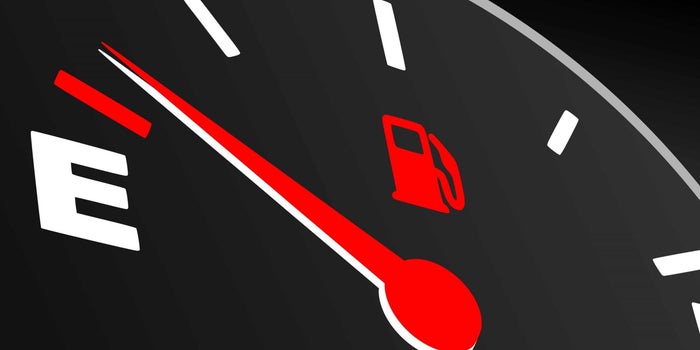Fuel Efficiency Guide, Drag, or wind resistance is the main cause of high fuel consumption. Learn how to save fuel by driving behind a larger vehicle and using your vehicle’s inertia to move ahead without using fuel. There is one good way to improve fuel efficiency and one dangerous method – the first is coasting and the other is slip-streaming. Let’s take a look at coasting first.
Fuel Efficiency Guide Coasting
When you aren’t accelerating and the kinetic energy developed already by the car is taking you forward, it’s called coasting. Coasting dissipates energy to counter drag and rolling resistance by dropping speed in the process. It can be used smartly instead of breaking at times. When you can see a red light from a distance or slow-moving traffic in front of you, and you know that you will have to brake to stop as you near it, ease off the accelerator and let the car come to a halt by shedding speed on its own. 
Avoiding Unnecessary Idling
What is idling? It’s the idle speed or RPM at which an engine runs without applying any gas. The engine is thus staying on by being fed fuel to do no work when the car is in neutral. Once you change gears to first and step on the accelerator, the engine speed increases, and you get going.  We have grown up with the knowledge that idling your car for a few minutes on a cold winter morning is good for your car. It is not. In the good old days, it was fine as it prolonged the life of the engine but present-day fuel injection systems have eliminated the need to idle your car. At idling speed, the engine doesn’t completely burn fuel leaving fuel residue on cylinder walls. This contaminates engine oil over time and will require sooner oil top-ups. Unnecessary idling also makes spark plugs dirtier and as a result, fuel consumption increases.
We have grown up with the knowledge that idling your car for a few minutes on a cold winter morning is good for your car. It is not. In the good old days, it was fine as it prolonged the life of the engine but present-day fuel injection systems have eliminated the need to idle your car. At idling speed, the engine doesn’t completely burn fuel leaving fuel residue on cylinder walls. This contaminates engine oil over time and will require sooner oil top-ups. Unnecessary idling also makes spark plugs dirtier and as a result, fuel consumption increases.
Clutching It Right
Every car has a clutch, whether a manual or an automatic. You don’t physically use one in an automatic but you can’t do away with it. That’s because a car’s engine runs all the time once you start a car but the wheels don’t. At times when they don’t, the two need to be disconnected from each other, and here, the clutch coupled with the gearbox act as the disconnecting tool. It also helps in changing engine speeds as you upshift or downshift but that’s another topic altogether. Let’s focus on the clutch, its usage, and its effects on fuel economy.  Fuel Efficiency Guide
Fuel Efficiency Guide














[…] your fuel injectors, and you’ll upkeep optimal performance. As such a vital component to your engine, you need to know every possible issue that can pop up, […]
[…] are two fundamental types of synthetic oil currently available in the market. Choosing which between these two will be […]
[…] aware of the many factors that must be considered before deciding on whether or not to coat our cars. Keep the elements below in mind, before spending your money on a ceramic coating for your […]
[…] of the best indicators of a failing fuel pump is found on the road while driving your car at a consistently high speed. If the vehicle […]
[…] tech features. We also named it a finalist for our 2019 Best Compact SUV for the cash award. Few compact SUVs can match the Sportage’s all-around quality. However, many rivals have more […]
[…] are manufactured and their qualities – mineral oils, semi-synthetic oils and fully synthetic oils. Here’s what each variety of engine oil […]
[…] who are budget-conscious. It has an ergonomic design sure to make you look good and fun in the city. Kia made its way through the heart of many Filipinos with its small and affordable models. Despite […]
[…] in the front wheels, except that these don’t have to take into consideration steering dynamics. Most all-wheel-drive and rear-wheel-drive vehicles will have their differentials mounted to the […]
[…] everything else in this world, different things come in various types or kinds. The same is true with your car’s tyres. Choosing the right tyre to mount onto your car’s wheels […]
[…] your vehicle can also help keep it operating in an efficient manner. This translates to better fuel economy and better safety. It can also reduce the chance of breakdowns in the […]
[…] Stress-free finance department. […]
[…] and potentially increasing the distances required to do so. Ultimately, they wear out completely, which can cause a host of […]
[…] Leaking or clogged fuel injector […]
[…] of engines with spark ignition. A fuel injection system for a diesel engine in which a pump forces fuel through a fuel line and an atomizing nozzle into the combustion […]
[…] latest safety equipment and convenience technology, but at times there are extra options available. It can be really hard to determine which ones are must-haves vs. nice-to-haves. In our opinion, […]
[…] your gloves whenever handling a glass cleaner. Also, if using an aerosol spray type of glass cleaner, make sure to have at least a face mask on since the mist can be inhaled through the lungs. It’s […]
[…] it would be quite difficult to prevent an engine from freezing or overheating. This automotive fluid is critical to the optimum operation of your car’s engine. Using the right type of coolant is, […]